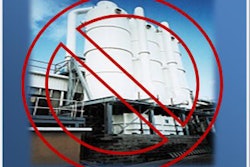Manufacturing is evolving faster than ever. To remain competitive and profitable, companies need to be faster and more nimble-- improving the speed of their business and plant operations improves their ability to respond to market changes. Therefore, the faster production and business information flows through an organization, the faster it can respond to changing market demands. But how do they do that? Some of the world’s best manufacturers are using new workflow software to enable end-to-end business and manufacturing processes that increase their velocity and flexibility.
Optimizing the supply chains isn’t enough anymore. Companies need to configure collaborative, end-to-end business processes that go beyond traditional manufacturing execution systems (MES) and manufacturing operations management (MOM) deployments.
New workflow software, available from vendors such as Invensys Operations Management, enhances the collaboration capabilities of MES/MOM using a comprehensive business process management (BPM) framework. Workflow can be used to model, execute and analyze plant and business processes, leading to better coordination between people, applications and processes. Those efforts have improved safety, compliance and quality, as well as productivity and operating costs.
End-to-End Manufacturing Business Processes
Manufacturing business processes are simply the steps one needs to take in order to meet a specific business objective or complete a task, and they are not necessarily related to production. Every domain within any organization-- quality, maintenance, operations, engineering, EH&S-- have well defined processes that help complete routine tasks, take preventative measures and address abnormal operations. These processes vary in size and complexity depending on the objective. In many cases, however, the process needs to be coordinated between a number of applications and/or people across many different departments, as depicted in Figure 1.
The concept of end-to-end manufacturing business process management goes well beyond the capabilities of traditional MES/MOM applications, which typically focus on enforcing and managing production-related activities. For example, overall production routing describes the sequence of events that transform raw materials into finished goods. Figure 2 describes some of the operations and departments impacted by process:
- Resources required
- Operator certifications
- General data collection requirements
- Quality inspection requirements
- Work instructions
- Operation specific sequences, e.g., add material, view work instruction, collect data
- Specification/recipe data, e.g., process parameters, line/machine setup parameters
- Production performance requirements
- Routing options, e.g., rework paths, conditional paths
MES/MOM applications enforce sequencing, resourcing and data collection requirements for every good produced. However, many other equally important and necessary processes that support production are not encapsulated. The full end-to-end process needs to involve many stakeholders from several different departments within the organization, including IT, maintenance and the warehouse, just to name a few.
As illustrated in Figure 3, although MES/MOM applications have all the information required to initiate an order, it does not bring in everyone affected by production start-up. Many other similar processes, like order completion, quarantines and emergency maintenance requests, need to be defined and managed outside of production. Workflow extends production management capabilities of an MES/MOM application to create and manage these end-to-end processes.
Model-Driven Manufacturing Operations Management
Model-Driven Manufacturing Operations Management (MOM) is a new trend within manufacturing and production organizations. It uses classic BPM concepts and technology to coordinate and unify people-driven processes, system-automated tasks and information flow from documents, forms and other content. In this way, process owners are able to model, execute, analyze and improve manufacturing operations, especially those that change often.
Process Modeling
Business process modeling notation (BPMN) can be used for drawing business processes workflows. Invensys Operations Management’s ArchestrA Workflow software provides an intuitive drag-and-drop environment that enables end-users to design all of their manufacturing business processes and all their associated user interfaces/forms that support production and production-related activities across the facility (or enterprise).
A manufacturing business process can be as simple as changing an order at a production center or as complex as requesting a specification change, which needs to travel across multiple departments and update multiple systems/applications. ArchestrA Workflow provides the ability to model simple or complex forms regardless of all the underlying or related applications. These forms can then be linked to MES/MOM and configured to display and/or collect data.
Process Execution
Model-Driven MOM applications execute manufacturing business processes that have been modeled to support production and production-related activities. ArchestrA Workflow is seamlessly embedded into Invensys Operations Management’s MES/MOM applications and third-party applications to enforce and manage these process activities. Workflows are shared via HMI applications, web browsers, smartphones, PDAs, e-mail and IM.
Process Analysis
Model-Driven MOM applications also analyze manufacturing business processes to drive improvements and increase speed and efficiency. ArchestrA Workflow audits all the activities associated with a particular MES/MOM process. Standard out-of-the-box performance analysis is provided for each, and end-users can establish alerts for business exceptions, as well as build KPIs.
Workflow in Action
For example, workflow software is capable of consistently managing material inspection and quality-holds on time and within compliance. Along with workflow software, the systems and people involved in the following scenario are the MES, the HMI, the packaging line operator (Bill), the production supervisor (Jay) and the purchasing agent (Sue).
Let’s say Bill is required to inspect all the raw materials being staged for consumption at the packaging line. He needs to ensure these materials comply with his company’s specifications. If the material does not meet specs, Bill is required to put it on hold and escalate the issue to Jay for resolution. If Jay chooses to send the material back to the vendor, it might be necessary to involve purchasing.
Here’s how the scenario works:
Bill has started a particular production run at the packaging line using Invensys Operations Management’s Wonderware MES work queue control within Wonderware InTouch HMI. He needs to stage some bottles in the filler so he activates the Material Inspection form within InTouch. The Material Inspection form initiates material inspection within ArchestrA Workflow.
The Material Inspection form displays all of the things that need to be inspected prior to staging the bottles at the production line. The form retrieves the visual details from the Wonderware MES database. Bill is required to enter PASS/FAIL for each one. But he notices that the color of the bottles is incorrect. He enters FAIL, along with some detailed comments, and closes the form.
Upon closing the Material Inspection form, ArchestrA Workflow invokes an MES transaction to change the state of the raw material lot to “QUALITY HOLD REVIEW.” It then sends a task via e-mail to Jay to resolve the quality hold.
Jay receives his message via Outlook on his PC. He accesses a form from a link within the message, which displays all of the inspection data Bill has entered, as well as the comments.
At this point, Jay has two options: resolve the quality hold or return the material to the vendor. If Jay chooses to return the material to the vendor, the workflow will send an e-mail message to Sue with all of the supporting information required to initiate a Returned Material Authorization process with the vendor. It will then invoke an MES transaction to change the state of the raw material lot to “RETURNED TO VENDOR.” From there, the task ends.
If Jay chooses to resolve the quality hold, then the workflow will invoke an MES transaction to change the state of the raw material lot to “APPROVED,” ending the task at that point.
To meet the business objective, the material inspection and quality hold resolution process is graphically modeled in ArchestrA Workflow software. Workflow tasks are delivered to the participants via their preferred communication channels, e.g., text, e-mail, HTML. The workflow coordinates all the people and applications in a consistent and compliant manner, as defined by the company. Additionally, escalation rules are configured for various activities within the workflow to ensure that the process is completed on time.
Summary
Establishing world-class, end-to-end business and manufacturing processes help manufacturers become more agile, competitive and profitable. Workflow software breaks down organizational barriers to information and unites people and systems. Coupling workflow applications with existing MES/MOM applications brings new means for collaboration, standardization and enforcement of best practices and operating procedures, helping companies respond more quickly to changing market dynamics.























